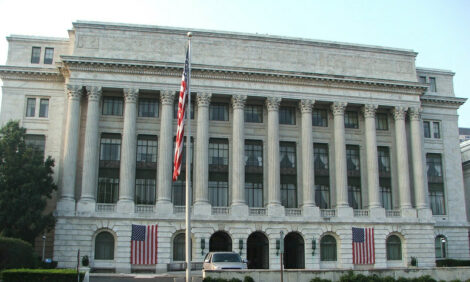



Weekly Australian Cattle Summary
AUSTRALIA - This report is a collection of weekly cattle price summaries from each Australian state by the Meat & Livestock Australia.
Western Australia cattle summary
Wet in the north dry in the south
The far north of the state continues to record reasonable rainfall in the Kimberley and down as far as the Pilbarra regions with the northern wet now in full swing. The southern Ag districts of WA continue to endure high temperatures and generally fine and dry conditions. Feed supplies in the majority of regions remain fair, while the far south coast has struggled with little or no summer rainfall having been received this year and this has had a negative impact on perennial growth. The New Year has the continuation of regional breeder sales and the demand for these has been weaker than in previous years and this could possibly be reflected of a lack of producer confidence given the weak demand for beef currently being experienced. Saleyards numbers were lower a two of the major weekly sales, while the Great Southern saw increased supplies of vealers forwarded into its Thursday fixture with almost 3,000 head having been sold. These numbers of vealers are expected to be maintained over the next month or so as producers off load their calves given the tight feed conditions many are experiencing.
Slaughter capacity continues to be tight with the State’s second largest beef processor still only killing limited numbers after a fire at its processing plant the previous year. The trade in WA continues to battle with the high Australian dollar value and cheaper eastern states imported product. Feeder demand has remained conservative with restocker interest also quiet and very selective, while live export demand was again generally confined to lightweight bull classes.
Heavy weight cow rates firm
There was a reasonable weight and quality evident in the vealer yardings this week, despite the fact that the majority of calves had “dried out” and were carrying less condition than pre-Christmas sales. Current market conditions have had a negative affect on purchaser confidence as both the restockers and feeders alike were more cautious in their purchasing habits. Generally the market across the vealer classes was quoted at lower levels with the Majority of rates lower by 5c to 8c/kg lwt irrespective of sex. There were only limited supplies of both trade weight yearling steers and heifers and quality was very mixed and generally plain. The combination of these factors coupled with a weaker local trade interest saw both steers and heifers realise lower values.
Heavy weight steers and bullocks were all sold in very limited supply and once again a weaker trade interest was recorded with rates subsequently lower. There were fewer cows available in saleyards this week as compared to pre-Christmas levels. Heavy weight cows recorded a similar and firm competition from the local and export processor sectors, while limited supplies of heavy weight bulls created an improved demand that saw rates rise by as much as 5c/kg lwt.
New South Wales cattle summary
Tight start to 2010
Outstanding rain across the majority of the state combined with heavy flooding in the North West resulted in throughput across MLA’s NLRS reported saleyards falling 51% on last year and 71% on the final full week of sales in 2009. All markets witnessed the heavy reduction in numbers with Tamworth yarding the lowest number on record.
Good rainfall fell over the Christmas period and into the New Year which encouraged producers to hold on as feed and water reserves improved. While flooding also halted stock transport The low prices witnessed towards the end of 2009 also discouraged producers to offload.
All grades of cattle fell sharply with vealer steer and heifer numbers declining 42% and 29% respectively on last year. Yearlings followed in a similar fashion with numbers back 41% and 46% respectively for steers and heifers year-on-year. Grown cattle however witnessed the greatest fall in supply with steers back 77% and cows 63% lower than the first week of last year. The larger fall in grown cattle numbers was to be expected given several export processors still not competing as the overseas markets remain flaccid.
Despite the good rainfall and improved overall seasonal outlook, quality remains to be mixed with several plain cattle still being offered. While the rain was widespread, a few areas missed out on heavy rain and are still encouraged to offload. The dry nature of the soil before the rain also meant that there was little runoff in some areas and water continues to be an issue.
Reinvigorated market
The majority of buyers were present and operating except some export processors. Restockers and feeders competed strongly on the limited supply in a market that was dearer across the board. Lightweight vealer steers to restockers averaged 186¢ with sales to 198¢ while the medium weight lines to slaughter mostly sold around 184¢/kg. The medium weight C2 heifers sold from 140c¢ to 195¢/kg. Medium weight C2 yearling steers to feed sold to 175¢ while the heavyweight 3 scores to slaughter averaged 165¢ to top at 185¢/kg. Lightweight yearling heifers purchased by feeders made between 140¢ and 177¢ while those to the trade sold to a top of 204¢ with most sales around 163¢/kg.
Medium weight grown steers purchased by feeders averaged 155¢ while the 3 scores to slaughter made to 160¢/kg. The heavyweight portion to similar orders sold around 153¢ to top at 160¢/kg. The majority of the grown heifers in 3 score condition sold from 130¢ to 157¢/kg. The medium weight D2 cows ranged from 90¢ to 115¢ while the 3 scores to slaughter averaged 113¢ with sales to 127¢/kg. The good run of heavyweight 4 score cows mostly sold around 121¢ to top at 130¢/kg.
Victoria cattle summary
Quality good
The New Year opened with most markets offering a very good supply of cattle. The only exception was Ballarat, which was very small in number. Bairnsdale was equal in number to the smaller sales of late. Currently, annual weaner sales are in progress at Wodonga, and in the western and central western districts. Some of the 60,000 plus head of cattle at these sales are in very good condition, and some heifers are being purchased for slaughter. This may have had an effect on demand at traditional sales as prices were mostly unchanged to cheaper. Most affected were vealer prices, especially in Gippsland markets as there is a large supply of excellent quality being penned. Prices were up to 8c/kg cheaper at these sales, but across the state comparisons were fairly similar. With most of Victoria having a good to very good season, there a lot of good to excellent quality cattle up for sale, and with potentially higher dressing percentages, processors are getting a bonus. The only class of cattle that are very mixed in quality are cows with quite a number of plain to very poor condition cows being sold this week.
There has been a noticeable difference between saleyards when comparing cow prices with those closer to Melbourne abattoirs selling at higher rates. As margins are reasonably lean for processors, freight costs are a more significant factor these days. Also affecting cow prices are the processor’s killing costs. As it costs the same to slaughter and bone very poor light weight cows, as does good cows, there was significant fall in prices for these.
Vealers start well
While Wodonga topped the state price table with lightweight vealers making 198c, these prices were mostly for single sales, as very few vealers made over 180c/kg. At Pakenham, where around 70% of the yarding were vealers of good to excellent quality, the average prices for B muscle vealers was around 168c/kg. However, capturing all vealers, including a large number of heifers, and prices were between 135c and 165c/kg for most sales. There was still some feedlot activity, but with the weaner sales in full swing, cattle purchased were mostly between 135c and 165c/kg. Yearlings steers averaged at 153c, and heifers were around 147c/kg, and with dressing percentages being quite good, carcass weight price averages were around 280c/kg. A reasonable supply of grown steers and bullocks sold to a restricted field of buyers, but quality and demand saw prime steers and bullocks make from 142c to 159.
Good quality beef cows rarely made over 126c with a top of 135c/kg paid. Leaner cows of heavier weights made from 105c to 128c, and very poor cows made anywhere between 35c and 98c/kg. The carcass weight price average was estimated to be 233c/kg. This figure did vary between 221c and 245c/kg across selling centres.
South Australia cattle summary
Small numbers
While cattle producers may be miffed with their prices, lamb producers on Tuesday should have been quite contended with a number of sales hitting the elusive 500¢/kg cwt mark again, as both the SA LE and Naracoorte caught up to the very dear Mt. Gambier and Hamilton (Vic) prices being paid pre Christmas. This was even though many of the lambs yarded have been weaned and shorn and also sporting lower skin values. However, even with the better over the hook prices being offered for delivery this week was not enough for producers to take those rates; instead trying their luck in the saleyards as processors struggle for numbers.
There were around 5,000 lambs offered at the SA LE with the usual trade and processor buyers operating strongly on the shorn supplementary fed trade and heavyweights, Feeder and restocker orders were also active at mainly dearer levels.
Naracoorte’s 5,460 lambs were mostly shorn with only a few pens containing woolly young lambs. They sold to strong trade and processor competition at dearer levels, although lacking any supermarket input. Restockers were keen to snap up any of the lightweights offered also at mainly dearer rates.
The only downside to this early dearer sale week was the lower prices being paid at Mt. Gambier on a smaller yarding when compared to last year, as the sale lacked the intensity witnessed at the last sale prior to Christmas. Even so, there were good returns for producers as most trade and heavy lambs sold in a 435¢ to 475¢/kg cwt price range.
Erratic trends
Due to the varying trends at each sale it led to fluctuating prices, although the dearer SA LE and Naracoorte prices led to many categories being dearer with more shorn lambs offered. Store and light 1 and 2 score lambs to feeder and restocker activity sold from $46 to $80.50 at rates generally $2 to $6/head dearer. Trade weight 2 to 4 score crossbreds were keenly sourced with most sales ranging between $80 and $112/head. This tended to leave some sales up to $10 dearer and others $4 to $5/head cheaper particularly at Mt. Gambier, with carcase weight prices spread mainly between 400¢ and 505¢ and averaging close to 455¢/kg. Heavy 3 to 5 score crossbred lambs sold from $100 to $154/head at basically unchanged rates when taking into account the varying trends at the three sales, and were averaging close to 460¢/kg cwt by the close of the week.
There were 7,693 sheep yarded, and sold to solid processor competition, with most light 1 and 2 score ewes selling from $31.50 to $56, and the 3 to 5 score medium and heavyweights $50 to $97.20/head. This left most carcase weight in a 275¢ to 325¢/kg price range.
TheCattleSite News Desk


